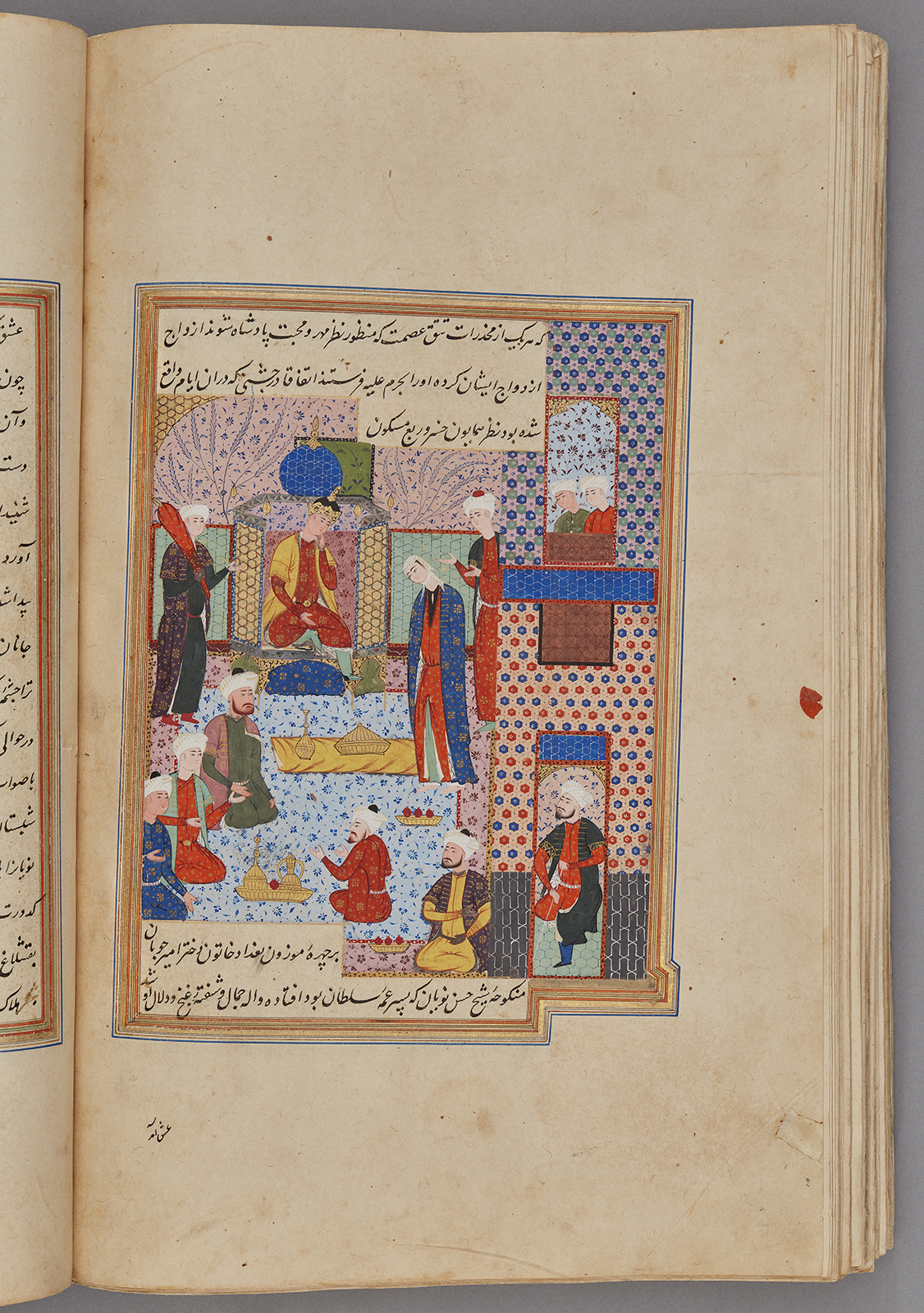Click on the image to zoom
In the Court of Abu Saʿid, Folio from a manuscript of Nigaristan
- Accession Number:AKM272.f229v
- Creator:Author: Ahmad b. Muhammad Ghaffari, Persian, died 1567 Scribe: Ahmad al-Shirazi
- Place:Iran, Shiraz (probably)
- Dimensions:38.7 cm × 25 cm × 6.4 cm
- Date:1573-74 CE/980 AH/AH 980
- Materials and Technique:Ink, opaque watercolour, and gold on paper
The miniature painting "In the Court of Abu Saʿid" is from an intact manuscript of Kitab-i Nigaristan, a collection of anecdotes and historical incidents written in prose by the historian and scholar Ahmad Muhammad Ghaffari (1504–1567/68) of Kashan in 1551–2. This illustrated manuscript, dated 1573, was probably produced in a Shiraz workshop.
See AKM272 for more information about the manuscript and links to the other illustrations.
Further Reading
The illustration is divided into two vertical spaces. Similar to other Illustrations in the Nigaristan, it shows both the interior of a room—which occupies most of the painting—and its façade. Here, the main room is a court scene where a crowned figure sits in a pavilion surrounded by attendants. A tall, slender woman stands in the middle of the room on the right.
According to the text, the illustration depicts a ceremony, where different women are introduced to the Ilkhanid ruler, Abu Saʿid, so that he can choose a bride. Though he makes his choice and asks the woman’s father to approve the match, he receives a negative reply. The anecdote confirms that even a powerful ruler cannot possess everything he desires.
Court scenes like these are among the favourite scenes depicted in Persian miniature paintings. They usually present a setting in which a crowned figure is enthroned. The throne can be in a landscape, often in lively nature with flowers and trees in blossom or in an interior, depending on the context of the illustration. Usually these scenes are supplemented with other figures such as servants and musicians.
- Elika Palenzona-Djalili
References
Sims, Eleanor. Peerless Images: Persian Painting and Its Sources. New Haven and London: Yale University Press, 2002. ISBN: 9780300090383
Note: This online resource is reviewed and updated on an ongoing basis. We are committed to improving this information and will revise and update knowledge about this object as it becomes available.


